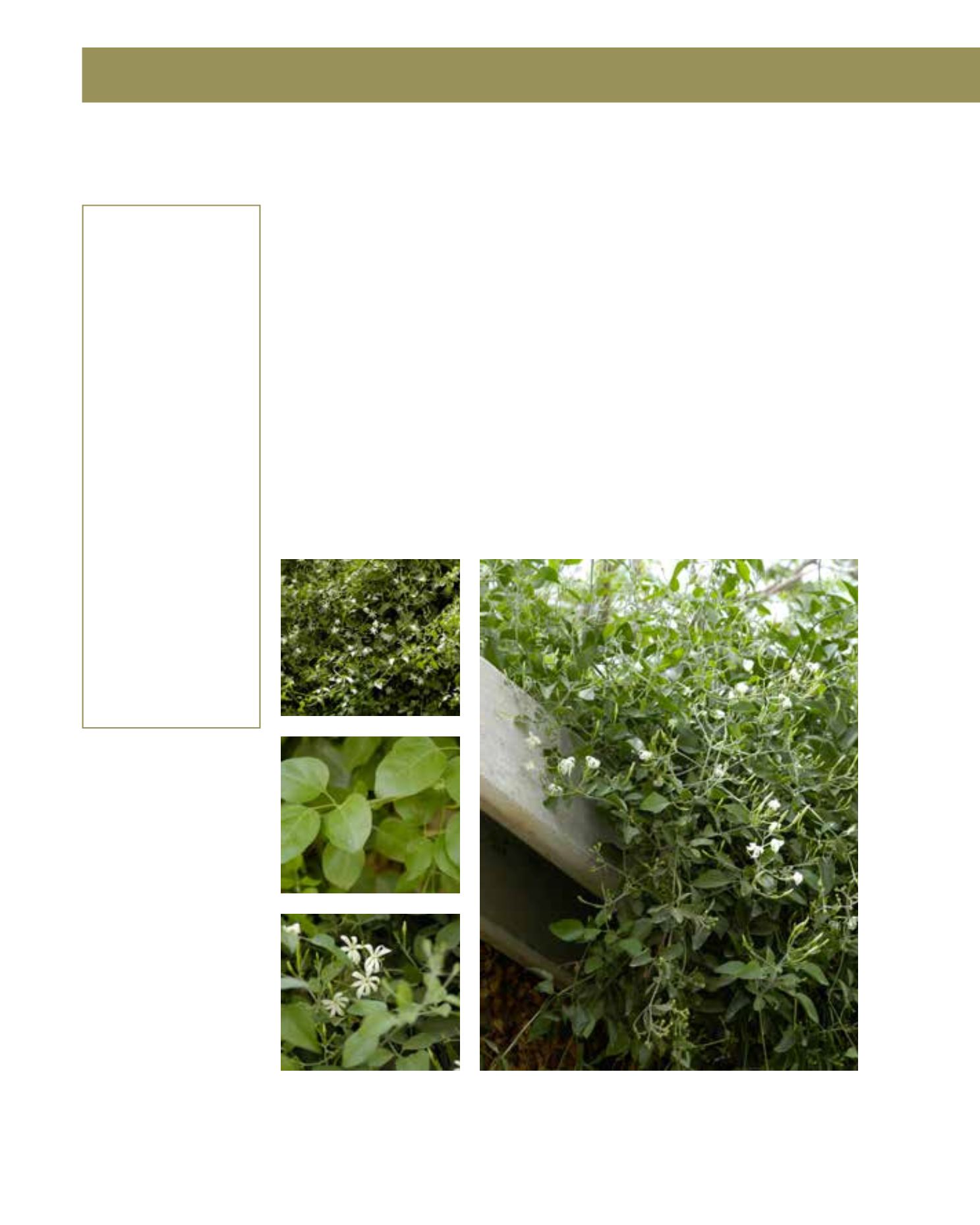

GENERAL
Origin
:
temperate,
sub-Mediterranean,
Mediterranean
Humidity
:
semi-arid, semi-
humid, very
humid
Propagation :
cuttings, layer
Maintenance :
moderate
CONDITIONS
Urban climate :
vulnerable
Dessication :
vulnerable
Stagnant water :
vulnerable
Irrigation
:
high
Salinity/ppm :
low (600 ppm)
Hardiness
:
-12°C
SHAPE
Type
:
climbers
Height
:
5 m-8 m
Spread
:
5 m-15 m
Foliage
:
semi-evergreen
FLOWER
Colour
:
white
Period
:
June - September
Smell
:
scented, strong,
flower, sweet,
heavy
FRUIT
Type of fruit :
berry
Fruit size
:
1 cm
The Poet’s Jasmine originates from southwest Asia. It received its name from the Persian word for
‘gift from God’. In Arriyadh, it is slow to grow at first and rather frost-tender. Although it needs
support like wires or a fence, it may reach a height of up to 8 metres. The glossy, evergreen foliage
consists of five or seven oval leaflets and is arranged opposite along glabrous, green twigs. They
last in winter and withstand low temperatures better than those of other species. White, slender
buds open to produce funnel-shaped white flowers in summer. Their scent is marvellous and
attracts attention immediately. Inflorescences have five corolla lobes. The soil should be nutrient-
rich and well-drained. Poet’s Jasmine grows well in containers. It should be watered freely in
spring and summer, but sparsely in winter. They are heavy feeders and do best with general-
purpose fertilisers. Jasmines are of cultural importance as the symbolic flower of Damascus or
as the national flower in Pakistan and the Philippines. Jasminum officinale ‘Flore Pleno’ grows
double flowers, and there are varieties with yellow or variegated leaves which should not be expo-
sed to full sun. They are easily propagated by cuttings in September. Another simple method is
layering stems for one growing season and to separate them from the mother plant, well rooted
and ready to flower within one year. Previously considered a cultivar, a large-flowered jasmine is
now classified as an independent species: Jasminum grandiflorum.
171
Jasminum officinale,
Oleaceae
Common White Jasmine,
Poet’s Jasmine
















